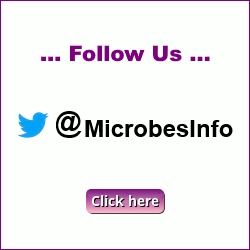An electronic store of information on the algae of the world and includes terrestrial, marine and freshwater forms.
Categories for Databases
Also See:
Links for Databases:
-
http://www.algaebase.org
-
BioCyc is a collection of 7600 Pathway/Genome Databases (PGDBs), plus software tools for understanding their data.
http://biocyc.org/ -
An ongoing project to present taxonomic information, images, records of collections, and references pertaining to diatoms.
http://researcharchive.calacademy.org/research/diatoms/types/typlist2.html -
A compendium of electronic and internet accessible tools and resources for molecular biology, biotechnology, molecular evolution, biochemistry, and molecular modeling.
http://mbcf149.dfci.harvard.edu/cmsmbr/ -
Disseminating information about RNA structure and evolution that has been determined using comparative sequence analysis.
http://www.rna.icmb.utexas.edu/ -
A nomenclatural database of corticioid fungi (Hymenomycetes).
http://andromeda.botany.gu.se/cortbase.html -
An online informatics resource for dictyostelium.
http://www.dictybase.org/ -
Eukaryotic Pathogen Database Resources. An integrated database covering the eukaryotic pathogens.
http://www.eupathdb.org/ -
The European Bioinformatics Institute Bioinformatics services area provides a comprehensive range of freely available and up-to-date databases for the field of bioinformatics.
http://www.ebi.ac.uk/services -
ExPASy of the Swiss Institute of Bioinformatics (SIB) is an extensible and integrative portal accessing many scientific resources, databases and software tools in different areas of life sciences.
http://www.expasy.org/ -
A resource available to the Fungal Genetics research community and to educational and research organizations in general.
http://www.fgsc.net/ -
An integrated genomic and functional genomic database for the kingdom Fungi.
http://fungidb.org/ -
Containing data on HIV genetic sequences, immunological epitopes, drug resistance-associated mutations, and vaccine trials. The website also gives access to a large number of tools that can be used to analyze these data.
http://www.hiv.lanl.gov/content/index -
The NCBI has been charged with creating automated systems for storing and analyzing knowledge about molecular biology, biochemistry, and genetics; facilitating the use of such databases and software by the research and medical community; coordinating efforts to gather biotechnology information both nationally and internationally; and performing research into advanced methods of computer-based information processing for analyzing the structure and function of biologically important molecules.
http://www.ncbi.nlm.nih.gov/ -
An information system designed to support the biomedical research community’s work on bacterial infectious diseases via integration of vital pathogen information with rich data and analysis tools.
https://www.patricbrc.org/ -
This database provides exhaustive automatic analysis of genomic sequences by a large variety of bioinformatics tools.
http://pedant.gsf.de/ -
An online database containing information about radiolarians.
http://www.radiolaria.org/ -
The RNase P Database is a compilation of RNase P sequences, sequence alignments, secondary structures, three-dimensional models, and accessory information.
http://www.mbio.ncsu.edu/RNaseP/ -
A community resource for the budding yeast Saccharomyces cerevisiae. This project provides encyclopedic information about the yeast genome and its genes, proteins, and other encoded features.
http://www.yeastgenome.org/ -
Sequences collected and analyzed in research sponsored by NIH Human Microbiome Project Demonstration Project and the University of Chicago Digestive Disease Research Core Center.
http://fungene.cme.msu.edu/scfa/ -
This collection offers you all information regarding the entire E.coli K12 chromosome and is searchable in different ways: by a gen/sequence map, scrolling different tables or just by search for a keyword.
http://www.uni-giessen.de/ecoli/ECDC/ecdc.htm -
IMGT is a high-quality integrated information system specialising in immunoglobulins (IG), T cell receptors (TR), major histocompatibility complex (MHC) and related proteins of the immune system of human and other vertebrate species, created in 1989 by Marie-Paule Lefranc (Université Montpellier II, CNRS).
http://www.imgt.org/ -
Established to provide resources to the scientific community for basic research and to facilitate the development of novel antiviral therapies and vaccines against human orthopoxvirus infections as well as approaches for environmental detection of virions and the rapid diagnosis of disease.
https://4virology.net/organisms/dsdna-viruses/poxviridae/ -
RDP provides ribosome related data services to the scientific community, including online data analysis, rRNA derived phylogenetic trees, and aligned and annotated rRNA sequences.
http://rdp.cme.msu.edu/ -
Contains occurrence data, as well as guidelines for the monitoring and control of the disease in humans and animals.
http://www.vetmed.lsu.edu/whocc/mp_world.htm -
WFCC-MIRCEN World Data Centre for Microorganisms (WDCM) provides a comprehensive directory of culture collections, databases on microbes and cell lines, and the gateway to biodiversity, molecular biology and genome projects.
http://www.wdcm.org/


